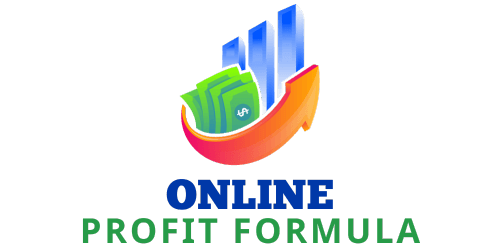You’ve created a stunning website that showcases your talents and expertise. Now, it’s time to make sure that it gets the attention it deserves from search engines. In this article, we will guide you on the path to optimizing your website for search engines, ensuring that your content reaches the right audience and boosts your online visibility. Uncertainty about the best optimization strategies might be in the air, but worry not! By following our easy-to-understand tips and tricks, you’ll soon be on your way to maximizing your website’s potential and driving traffic like never before. So, let’s dive right in and unlock the secrets of effective website optimization.

Website Structure
Use a Simple and Clean URL Structure
When optimizing your website for search engines, it is important to have a simple and clean URL structure. This means that your URLs should be concise, descriptive, and easy for both users and search engine bots to understand. A clean URL structure will make it easier for search engines to crawl and index your pages, improving your website’s overall visibility in search results.
Create an XML Sitemap
Another important aspect of optimizing your website for search engines is creating an XML sitemap. This is a file that lists all the pages on your website and provides additional metadata about each page, such as when it was last updated and how important it is in relation to other pages on your site. By submitting an XML sitemap to search engines, you can ensure that your pages are discovered and indexed more efficiently.
Implement Breadcrumbs
Breadcrumbs are a navigational aid that helps users understand the structure of your website and easily navigate back to previous pages. From an SEO standpoint, breadcrumbs also provide additional text-based links for search engines to crawl and understand the hierarchy of your website. By implementing breadcrumbs, you can improve the user experience and make it easier for search engines to index your website.
Ensure Mobile-Friendliness
With the increasing use of mobile devices, it is crucial to ensure that your website is mobile-friendly. This means that your website should be responsive and adapt seamlessly to different screen sizes and resolutions. By providing a mobile-friendly experience, you not only meet the expectations of mobile users but also improve your chances of ranking higher in mobile search results, as search engines prioritize mobile-friendly websites.
Optimize Page Speed
Page speed is a critical factor in both user experience and search engine optimization. Slow-loading pages can lead to high bounce rates and frustration among users. Additionally, search engines consider page speed as a ranking factor. To optimize your website’s page speed, you can compress images, minify CSS and JavaScript files, enable browser caching, and reduce server response time. By improving your website’s page speed, you can enhance the user experience and boost your search engine rankings.
Keyword Research
Perform Keyword Analysis
Keyword analysis is a fundamental step in optimizing your website for search engines. It involves researching and identifying the keywords and phrases that are relevant to your business or website content. By understanding the search intent behind these keywords, you can tailor your website’s content to align with what users are searching for.
Identify Long-tail Keywords
Long-tail keywords are more specific and longer phrases that reflect a user’s specific search intent. While they may have lower search volumes compared to generic keywords, they often have higher conversion rates. By incorporating long-tail keywords into your website’s content, you can attract highly targeted traffic and increase the chances of converting visitors into customers.
Consider Competitor Keywords
Analyzing your competitors’ keywords can provide valuable insights and help you identify additional opportunities to optimize your website. By understanding which keywords your competitors are targeting and ranking for, you can refine your own keyword strategy and identify gaps or areas where you can differentiate your website.
Utilize Keyword Tools
Keyword research tools, such as Google Keyword Planner, SEMrush, and Moz Keyword Explorer, can provide valuable data and insights on keyword volume, competition, and related keywords. These tools can help you identify relevant keywords to target and optimize your website accordingly.
Optimize for User Intent
When selecting and optimizing keywords for your website, it is important to consider the user intent behind the search queries. User intent refers to the goal or purpose behind a search query. By aligning your website’s content with user intent, you can provide relevant information and increase the chances of ranking higher in search results. Understanding the different types of user intent, such as informational, navigational, and transactional, can help you create targeted and effective content.

On-Page Optimization
Optimize Meta Tags
Meta tags, including the title tag and meta description, are HTML elements that provide information about a web page to search engines and users. Optimizing these meta tags with relevant keywords and compelling descriptions can improve your website’s search engine visibility and click-through rates.
Include Targeted Keywords in Headers
Headers, such as H1 and H2 tags, not only help structure your content but also provide additional context to search engines about the topic of the page. By including targeted keywords in your headers, you can signal to search engines the relevance of your content and improve your chances of ranking for those keywords.
Write High-Quality and Unique Content
Creating high-quality and unique content is crucial for both user engagement and search engine optimization. Well-written and informative content not only keeps users on your website but also signals to search engines that your website is a valuable resource. By regularly producing fresh and original content, you can attract and retain visitors while improving your website’s visibility in search results.
Improve Readability
Readability plays a significant role in user experience and search engine optimization. To improve readability, use shorter sentences, concise paragraphs, and bullet points or numbered lists to break up text. Additionally, use headings and subheadings to structure your content and make it easier to scan. By enhancing readability, you can create a positive user experience and improve your website’s chances of ranking higher in search results.
Optimize Images with Alt Text
Search engines cannot interpret images on their own, so it is essential to optimize them with alt text. Alt text is a descriptive text that provides information about the image to search engines and visually impaired users. By including relevant keywords in your alt text, you can enhance the accessibility of your website and improve the chances of your images appearing in image search results.
Use Internal Linking
Internal linking involves linking from one page of your website to another page within the same domain. By strategically incorporating internal links, you can improve website navigation, distribute link equity, and help search engines discover and index your content more effectively. Internal linking also provides additional context to search engines about the relationships between different pages on your website.
Implement Schema Markup
Schema markup is a form of structured data that helps search engines understand the content on your website more comprehensively. By implementing schema markup, you can provide additional context and information about your website’s content, such as reviews, ratings, events, products, and more. This can enhance the visibility of your website in search results and improve click-through rates.
Off-Page Optimization
Build High-Quality Backlinks
Backlinks are links from other websites that point to your website. They are an important off-page optimization factor and signal to search engines the credibility and authority of your website. Building high-quality backlinks from reputable and relevant websites can improve your website’s search engine rankings. You can acquire backlinks through strategies such as guest blogging, influencer outreach, content promotion, and creating valuable resources that others are likely to link to.
Engage in Social Media
Social media plays a significant role in off-page optimization. By actively engaging with your audience on social media platforms, sharing your content, and building a strong online presence, you can boost brand visibility, attract more traffic to your website, and increase the likelihood of others sharing and linking to your content.
Promote Content
Promoting your website’s content through various channels, such as social media, email newsletters, and industry-specific forums, can help increase its visibility and reach a wider audience. By actively promoting your content, you can attract more traffic, generate backlinks, and improve your website’s overall search engine optimization.
Guest Blogging and Influencer Outreach
Guest blogging and influencer outreach can be effective strategies for building relationships, increasing brand exposure, and acquiring backlinks. By reaching out to relevant influencers or authority websites in your industry and offering to contribute valuable content, you can establish yourself as an expert and gain exposure to new audiences.
Monitor and Manage Online Reviews
Online reviews impact your website’s reputation and search engine rankings, especially in local search results. Positive reviews can help build trust and credibility, while negative reviews can harm your reputation. It is important to actively monitor and manage online reviews, respond to customer feedback, and address any issues promptly. By maintaining a positive online reputation, you can enhance your website’s search engine optimization and attract more customers.

Mobile Optimization
Ensure Responsiveness
Ensuring that your website is responsive is essential for mobile optimization. A responsive website adapts seamlessly to different screen sizes and resolutions, providing an optimal user experience across all devices. Search engines prioritize mobile-friendly websites in mobile search results, so it is crucial to optimize your website for responsiveness.
Implement Accelerated Mobile Pages (AMP)
Accelerated Mobile Pages (AMP) is an open-source initiative designed to improve the performance and speed of mobile web pages. By implementing AMP, you can create lightweight and fast-loading versions of your web pages, making them more appealing to mobile users and search engines alike. This can result in higher rankings and improved user experience on mobile devices.
Optimize for Voice Search
With the rise of voice-activated virtual assistants and smart devices, optimizing your website for voice search is becoming increasingly important. Voice search queries tend to be more conversational, longer, and question-based. To optimize for voice search, consider incorporating natural language and long-tail keywords into your content and ensuring that your website provides concise and relevant answers to commonly asked questions.
Improve User Experience on Mobile Devices
A positive user experience is crucial for mobile optimization. Ensure that your website loads quickly, has a user-friendly interface, and is easy to navigate on mobile devices. Eliminate any clutter, use large enough font sizes, and optimize your layout for touch interactions. By prioritizing user experience on mobile devices, you can enhance engagement and improve your website’s search engine optimization.
Technical Optimization
Ensure Site Accessibility
Ensuring that your website is accessible to all users, including those with disabilities, is not only important from an ethical standpoint but also for search engine optimization. By following web accessibility guidelines and optimizing your website for assistive technologies, you can improve your website’s usability, user experience, and search engine rankings.
Fix Broken Links
Broken links can negatively impact user experience and search engine optimization. Regularly check your website for broken links and fix them promptly. You can use tools like Google Search Console to identify broken links and ensure that visitors and search engines can access all of your website’s content without encountering errors.
Optimize Website Navigation
Website navigation plays a crucial role in user experience and search engine optimization. Ensure that your navigation is intuitive, user-friendly, and easily accessible. Use descriptive anchor text for navigation links, categorize your content logically, and include a search bar to enable users to find what they are looking for quickly. A well-optimized navigation structure can help search engines understand the hierarchy of your website and improve indexing.
Implement HTTPS
HTTPS (Hypertext Transfer Protocol Secure) is an encrypted version of HTTP that ensures secure communication between web browsers and websites. Implementing HTTPS is crucial for website security, user trust, and search engine optimization. Search engines prioritize websites with HTTPS in search results, so it is important to secure your website with an SSL certificate.
Remove Duplicate Content
Duplicate content can confuse search engines and negatively impact your website’s search engine rankings. Identify and remove any duplicate content on your website, whether it occurs within your site or across different domains. You can use tools like Copyscape or Google Search Console to identify and address duplicate content issues.
Enable Crawling and Indexing
To ensure that search engines can crawl and index your website effectively, it is important to optimize your website’s robots.txt file and XML sitemap. The robots.txt file instructs search engine bots on which pages to crawl and which to exclude, while the XML sitemap provides a roadmap of your website’s pages. By properly configuring these files, you can ensure that search engines can access and index your content accurately.
Use Structured Data
Structured data, also known as schema markup, provides additional context and information to search engines about your website’s content. By implementing structured data, you can enhance the visibility and appearance of your website in search results, potentially leading to higher click-through rates. Structured data can be used to mark up various types of content such as events, products, recipes, articles, and more.
User Experience
Improve Website Design and Navigation
A well-designed website with a user-friendly interface and intuitive navigation can significantly improve the user experience. Ensure that your website’s design is visually appealing, consistent, and reflects your brand identity. Pay attention to the layout, color scheme, typography, and overall aesthetics of your website. Make it easy for users to navigate through your website and find the information they are looking for.
Enhance Page Loading Speed
Page loading speed is a critical factor in user experience and search engine optimization. Slow-loading pages can lead to high bounce rates and frustration among users. To enhance page loading speed, optimize your images, minify CSS and JavaScript files, enable browser caching, and leverage content delivery networks (CDNs). By improving page loading speed, you can create a positive user experience and improve your website’s search engine rankings.
Optimize for Different Browsers
Your website should be compatible with various web browsers, including popular ones such as Google Chrome, Mozilla Firefox, Safari, and Internet Explorer. Test your website on different browsers to ensure that it displays correctly and functions as intended. Cross-browser compatibility is essential to provide a consistent user experience across different platforms.
Optimize for Different Devices
In addition to different web browsers, your website should be optimized for different devices, including desktops, tablets, and mobile devices. Responsive web design ensures that your website adapts and displays properly on different screen sizes and resolutions. By optimizing your website for different devices, you can reach a wider audience and provide a seamless user experience.
Focus on User Engagement
User engagement metrics, such as time on page, bounce rate, and social shares, are important indicators of the quality and relevance of your website’s content. Engaging content, interactive elements, and clear calls to action (CTAs) can encourage users to spend more time on your website, explore different pages, and take desired actions. By focusing on user engagement, you can improve your website’s search engine rankings and conversion rates.
Reduce Bounce Rate
Bounce rate is the percentage of visitors who leave your website after viewing only one page. A high bounce rate can indicate that users are not finding what they are looking for or are not engaged with your content. To reduce bounce rate, ensure that your website’s content is relevant, easy to read, and answers users’ inquiries. Optimize your landing pages, improve navigational elements, and encourage users to explore more of your website.
Improve CTA Placement
Calls to action (CTAs) are crucial for guiding users and encouraging desired actions on your website, such as making a purchase, signing up for a newsletter, or contacting you. Place CTAs strategically throughout your website, making them visually prominent and easily clickable. Optimize your CTAs with action-oriented language and consider using contrasting colors to make them stand out. By improving CTA placement, you can increase user engagement and conversions.
Content Marketing
Create High-Quality and Engaging Content
High-quality and engaging content is the backbone of any successful content marketing strategy. Create content that is informative, valuable, and meets the needs of your target audience. Focus on originality, accuracy, and providing solutions to their problems or inquiries. By consistently producing high-quality content, you can attract and retain a loyal audience and improve your website’s search engine optimization.
Research and Use Targeted Keywords
When creating content, conduct keyword research to identify relevant and targeted keywords to include in your articles, blog posts, and other content. Keyword integration helps search engines understand the context and subject matter of your content, improving your chances of ranking higher in relevant search results. However, prioritize the user experience and ensure that your content flows naturally and is not keyword-stuffed.
Implement a Blog
A blog provides an excellent platform to regularly publish fresh and informative content that can attract and engage your target audience. Write blog posts on topics that are relevant to your industry, products, or services, and address common questions or concerns. By consistently updating your blog with valuable content, you can build authority, attract organic traffic, and improve your website’s search engine optimization.
Utilize Infographics and Visual Content
Infographics and visual content can effectively convey complex information in a visually appealing and easily digestible format. They can attract attention, encourage social sharing, and increase engagement on your website. Use infographics, images, videos, and other visual elements to enhance the visual appeal and storytelling of your content. By incorporating visual content, you can provide a richer user experience and improve your website’s search engine rankings.
Promote Content through Social Channels
Promoting your content through social media channels, such as Facebook, Twitter, LinkedIn, and Instagram, can help increase its visibility and reach a wider audience. Create engaging social media posts that highlight your content and include appropriate hashtags and relevant visuals. By leveraging social media platforms, you can drive traffic to your website, attract backlinks, and enhance your overall content marketing strategy.
Local SEO
Claim Your Google My Business Listing
Google My Business is a free tool provided by Google that allows you to manage your business information, such as address, phone number, hours of operation, and customer reviews. Claiming and verifying your Google My Business listing is essential for local SEO as it ensures that your business appears in local search results and Google Maps. Optimize your listing with accurate information, appealing visuals, and positive customer reviews.
Optimize NAP (Name, Address, Phone Number) Listings
Consistency in your NAP (Name, Address, Phone Number) listings across various platforms is crucial for local SEO. Ensure that your business name, address, and phone number are accurate and consistent across your website, Google My Business listing, social media profiles, directories, and other online platforms. Inaccurate or inconsistent NAP listings can confuse both users and search engines, impacting your local search visibility.
Target Local Keywords
Include locally relevant keywords in your website’s content to optimize for local search queries. For example, if you have a restaurant in New York City, include keywords such as “New York City restaurant” or “best restaurants in NYC” in your content. Incorporate local landmarks, neighborhoods, and colloquial terms to attract users searching for local businesses or services in your area.
Get Local Backlinks
Acquiring backlinks from locally relevant websites can boost your website’s visibility in local search results. Partner with local organizations, sponsor local events, participate in community initiatives, or collaborate with other businesses in your area to earn backlinks. Local backlinks from reputable sources can improve your website’s authority, credibility, and local search rankings.
Encourage Online Reviews
Online reviews play a crucial role in local search rankings and consumer trust. Encourage your customers to leave reviews on platforms such as Google My Business, Yelp, TripAdvisor, and industry-specific review sites. Positive reviews can enhance your online reputation, attract potential customers, and improve your local search visibility. Responding to reviews, whether positive or negative, demonstrates your commitment to customer satisfaction.
Monitor and Improve
Track and Analyze Website Analytics
Regularly monitor and analyze your website’s analytics using tools like Google Analytics. Track key metrics such as organic traffic, bounce rate, conversion rates, and user engagement. Analyzing these metrics can provide valuable insights into your website’s performance, identify areas of improvement, and inform your SEO strategy.
Monitor Keyword Rankings
Monitor your website’s keyword rankings to assess your progress and identify opportunities for optimization. Track how your target keywords are performing in search results and make necessary adjustments to your content and optimization strategies. Tools like SEMrush and Moz can help you monitor keyword rankings and assess your website’s visibility in search results.
Monitor Site Errors and Usability Issues
Regularly check for site errors, broken links, and usability issues that may hinder your website’s performance. Use tools like Google Search Console to identify errors, crawl issues, and areas where your website can be improved. By monitoring and addressing site errors and usability issues, you can provide a seamless user experience and improve your website’s search engine optimization.
Regularly Update and Refresh Content
Regularly updating and refreshing your website’s content is important for both user engagement and search engine optimization. Review your existing content regularly, update outdated information, and add new information or insights. Additionally, create a content calendar to plan and publish fresh content consistently. By regularly updating your content, you can attract returning visitors, encourage search engine crawling, and improve your website’s visibility.
Stay Updated on SEO Trends and Algorithm Changes
SEO is a constantly evolving field, with search engines regularly updating their algorithms and introducing new ranking factors. Stay updated on the latest SEO trends, industry news, and algorithm changes to ensure that your website stays optimized and competitive. Follow credible SEO resources, attend conferences and webinars, and continuously educate yourself on the latest best practices in search engine optimization.
By implementing these comprehensive strategies and best practices, you can optimize your website for search engines and improve its visibility, user experience, and overall search engine rankings. Remember to continuously monitor and adapt your SEO efforts based on data and feedback to stay ahead in the ever-changing landscape of search engine optimization.

